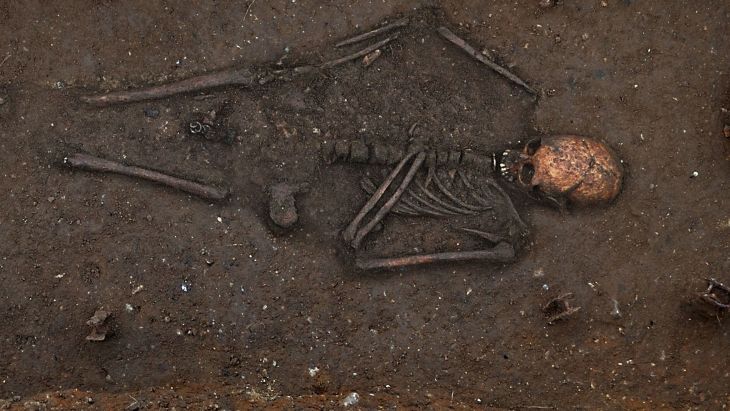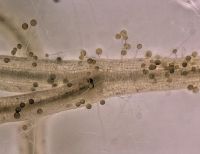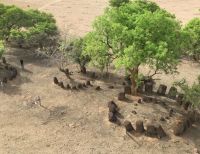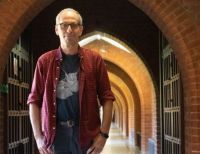A new life cut short
New “you are what you eat” isotopic analysis of the young woman’s bones and teeth – conducted by bioarchaeologists Dr Sam Leggett and Dr Alice Rose, and archaeologist Dr Emma Brownlee, during PhD research at the University of Cambridge – also reveals that she moved to England from somewhere near the Alps, perhaps southern Germany, sometime after she turned 7 years old.
Map indicating that the woman likely originated in southern Germany based on research by S. Leggett, A. Rose & E. Brownlee.
Map indicating that the woman likely originated in southern Germany based on research by S. Leggett, A. Rose & E. Brownlee.
Leggett and Rose also found that once the girl had arrived in England, the proportion of protein in her diet decreased by a small but significant amount. This change occurred close to the end of her young life, showing that the period between her migration and burial near Cambridge was tragically short.
Dr Leggett, now at the University of Edinburgh, said: “She was quite a young girl when she moved, likely from part of southern Germany, close to the Alps, to a very flat part of England.”
“She was probably quite unwell and she travelled a long way to somewhere completely unfamiliar – even the food was different. It must have been scary.”Dr Sam Leggett
Previous analysis indicated that the young woman had suffered from illness but her cause of death remains unknown. She was buried in a remarkable way – lying on a carved wooden bed wearing the cross, gold pins (also on display) and fine clothing.
Hers is one of only 18 bed burials ever uncovered in the UK. Her ornate cross, combining gold and garnets (third quarter of the 7th century), is one of only five of its kind ever found in Britain and identifies her as one of England’s earliest converts to Christianity and as a member of the aristocracy if not royalty. The best known example of such a cross was found in the coffin of St Cuthbert.
The Trumpington Cross is found
The Trumpington Cross is found
In 597 AD, the pope dispatched St Augustine to England on a mission to convert the pagan Anglo-Saxon kings, a process which continued for many decades.
Dr Leggett said: “She must have known that she was important and she had to carry that on her shoulders. Her isotopic results match those of two other women who were similarly buried on beds in this period in Cambridgeshire.
“So it seems that she was part of an elite group of women who probably travelled from mainland Europe, most likely Germany, in the 7th century, but they remain a bit of a mystery. Were they political brides or perhaps brides of Christ? The fact that her diet changed once she arrived in England suggests that her lifestyle may have changed quite significantly.”
Dr Sam Lucy, a specialist in Anglo-Saxon burial from Newnham College, Cambridge, who published the Anglo-Saxon excavations at Trumpington, said:
“These are intriguing findings, and it is wonderful to see this collaborative research adding to our knowledge of this period.
“Combining the new isotopic results with Emma Brownlee’s research into European bed burials really does seem to suggest the movement of a small group of young elite women from a mountainous area in continental Europe to the Cambridge region in the third quarter of the seventh century.
“Southern Germany is a distinct possibility owing to the bed burial tradition known there. Given the increasingly certain association between bed burial, such cross-shaped jewellery, and early Anglo-Saxon Christianity, it is possible that their movement related to pan-European networks of elite women who were heavily involved in the early Church.”
Dr Jody Joy, the exhibition’s co-curator, said: “The story of this young woman goes to the very heart of what our exhibition is all about – new research making visible the lives of people at pivotal moments of Cambridgeshire’s history.
“MAA holds one of Britain’s most important collections of Early Medieval archaeology and the Trumpington bed burial is so important. It looks like it still has much more to teach us.”
In the exhibition, the ‘Trumpington Cross’ will be displayed together with the delicate gold and garnet pins connected by a gold chain, which were found near the teenager’s neck. These pins probably secured a long veil to an outer garment of fine linen. The pins would have caught the light as she moved. The burial bed’s decorative headboard will also be exhibited.
Linked pins from the Trumpington Cross burial (MAA, 2017.59.1-2)
Linked pins from the Trumpington Cross burial (MAA, 2017.59.1-2)
References
C. Evans, S. Lucy & R. Patten, Riversides: Neolithic Barrows, a Beaker Grave, Iron Age and Anglo-Saxon Burials and Settlement at Trumpington, Cambridge (2018); S. Lucy, ‘The Trumpington Cross in context’, Anglo-Saxon England (2016).
Watch a short film about the discovery of the burial:
















